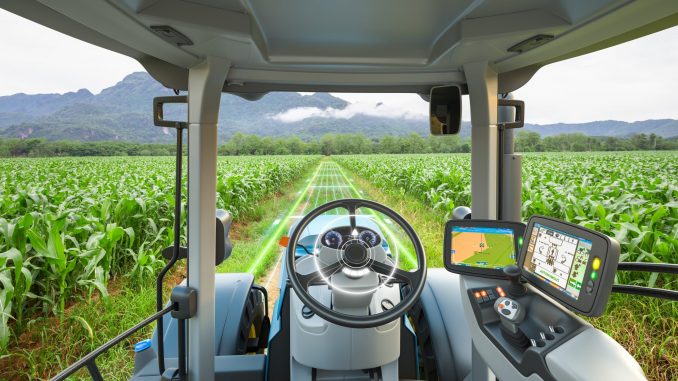
Smart farming and precision agriculture use technology to improve the efficiency and productivity of the farm-to-market process. IoT sensors are used in smart agriculture, often known as ag-tech, to connect everything from irrigation systems to soil and livestock production. As the Department of Telecommunications (DoT) announced that 5G internet services will indeed be rolled out in India in 2022, the high-bandwidth cellular technology is expected to have an influence on agriculture.
These enhancements are required to feed the planet’s rising population, which is expected to reach 9.7 billion by 2050. Precision farming facilitated by 5G technology has the potential to optimise resources, cut water usage, and boost production.
By 2035, fifth-generation wireless, or 5G, is predicted to produce $12.3 trillion in revenue and 22 million employment globally. So, how will it affect the agriculture business as a whole? With the potential for 5G to establish new business models in a variety of industries, including automotive and manufacturing, use cases in agriculture hold a lot of promise for the future of smart farms and their ability to harness data’s value.
Smart Agriculture With 5G
Now-a-days farms use a variety of Internet of Things (IoT) devices to assist producers reduce operating costs, boost yields, and gain improved insight in a volatile environment. By 2023, it is expected that over 12 million agricultural sensors will have been placed throughout the world.
5G is projected to take things to the next level by allowing machine learning and near-real-time communication between devices and the cloud, as well as much higher internet speeds (up to 100 times faster than 4G). Agricultural original equipment manufacturers (OEMs) may profit from automated agricultural procedures enabled by next-generation 5G technologies, which allow them to gather and analyse rich data from their machines and terrain from a distance.
Farmers will have access to a wide range of upgraded technology thanks to 5G. A wider network of data-gathering sensors can provide a more accurate picture of field conditions. Autonomous drones can scan fields using artificial intelligence to detect weeds and spray pesticides with pinpoint accuracy. More importantly, farmers will be able to better evaluate their water usage and make irrigation system modifications based on reliable data. Around the world, groups like the 5G Open Innovation Lab in the United States are testing and creating use cases on the ground.
Future of Modern Farming
According to a United Nations assessment, 38% of the Earth’s surface is utilised for agricultural activities, such as crops and cattle grazing. While the majority of today’s 5G infrastructure is being implemented in densely populated metropolitan areas, rural coverage is expanding. OEMs and actors in the agriculture industry will be able to extract more value thanks to 5G.
To fulfil the global food demand for a growing population, innovations across the farming industry will be required to increase the efficacy of farming practices. While agriculture has been slow to adopt new technologies, the prospect of smarter farming methods is understandably exciting.
5G-enabled solutions will help facilitate the digital transformation of agriculture, and while the industry has been slow to adopt new technologies, the prospects of smarter farming methods are understandably exciting. The worldwide smart agriculture industry is anticipated to be worth $15.3 billion by 2025, which means there are several potential players.
Source:Krishi Jagran

Leave a Reply